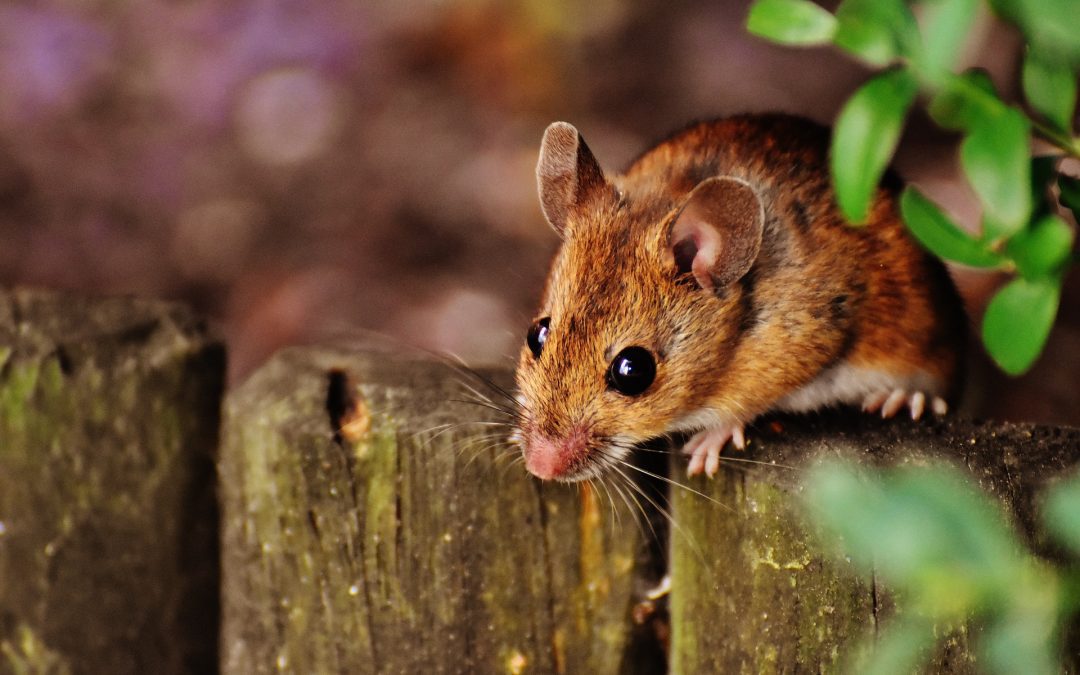House mice, like all rodents, are a highly intelligent species. Their physical features include a pointy snout, small rounded ears, and a body-length scaly tail. These features work to their advantage enabling them to climb, swim, and hide in their pursuit of access to your home. Mice are willing to adapt to your home in their search for food, warmth, and shelter.
As fall and winter approach, the opportunity for mice to enter your home is more prevalent than ever. Don’t underestimate their ability to be resourceful opportunists! May Exterminating’s team is ready to help when you need us. Prevention is a big part of success. Here are a few simple steps to help keep mice out of your home.
Eliminate Entry: To rodent-proof your home, visually inspect around the foundation to see if there are holes or gaps. Also inspect the from inside your home. Check all exterior walls for spaces and gaps. If you find an opening, no matter how big or small seal it. Mice can squeeze themselves into the smallest of openings. Common places to check indoors and outdoors are around pipes, vents, eaves, and doors.
If you see mice droppings, gnawed drywall, or materials with clean-cut holes, a mouse has probably been in the vicinity. Seal any of these areas with coarse grade steel wool or caulking.
Good Sanitation: Your cozy home provides the three things mice love: shelter, warmth, and food. Because mice can survive in a very small area with limited amounts of food it important to make sure you’re cleaning up behind yourself. Cleaning countertops eliminates food residue. Sweep and vacuum regularly to ensure food particles are not left on the floor. Remember they don’t need much. Store food in airtight plastic or glass containers. Plastic bags are not preferable for storage, as mice can easily gnaw through them. Even your garbage cans are susceptible. Keep the lids secure to make entry difficult.
When spills happen, clean them up well. Mice don’t like ammonia, so cleaning with ammonia can help repel mice. If ammonia is too strong for you, you might try natural products like peppermint oil. It won’t remove mice, but its scent deters them.
Choose a Trap: If you have a mouse in the house, but just can stand the thought of seeing smelling, or disposing of a rodent, use a mouse bait station. These require the least effort on your part. Rodents seeking out food locate the bait stations, crawl inside, nibble bait and return to their nest to die within days. Or, you can take a more traditional approach with a spring-loaded snapping trap or glue traps.
For any trap or bait, wear gloves for safety and scent precautions. Mice have a very keen sense of smell and will avoid traps if they smell your scent from handling them. Wearing gloves helps your bait or trap stay scent-attractive to the mouse.
Location, Location, Location: Proper placement of mouse traps is critical. Place the traps in areas where you have seen mice. You may catch a glimpse of a head poking out or see one scurry across the floor. If you do not physically see the mice, you can still tell where they’ve been from droppings, scratches or gnawing on baseboard and walls. Put traps in those traffic areas, placing them perpendicular to the wall (the trigger section should be facing the baseboard.)
What you should know: Given the right social and environmental factors mice can survive from 1 year to 18 months. In that time, they quickly multiply in numbers, turning a simple problem into a major issue. If you are dealing with mice in your home on a regular basis, you may be dealing with a problem that requires professional help. Contact your local May Exterminating office for a pest control specialist to help you today.


Recent Comments